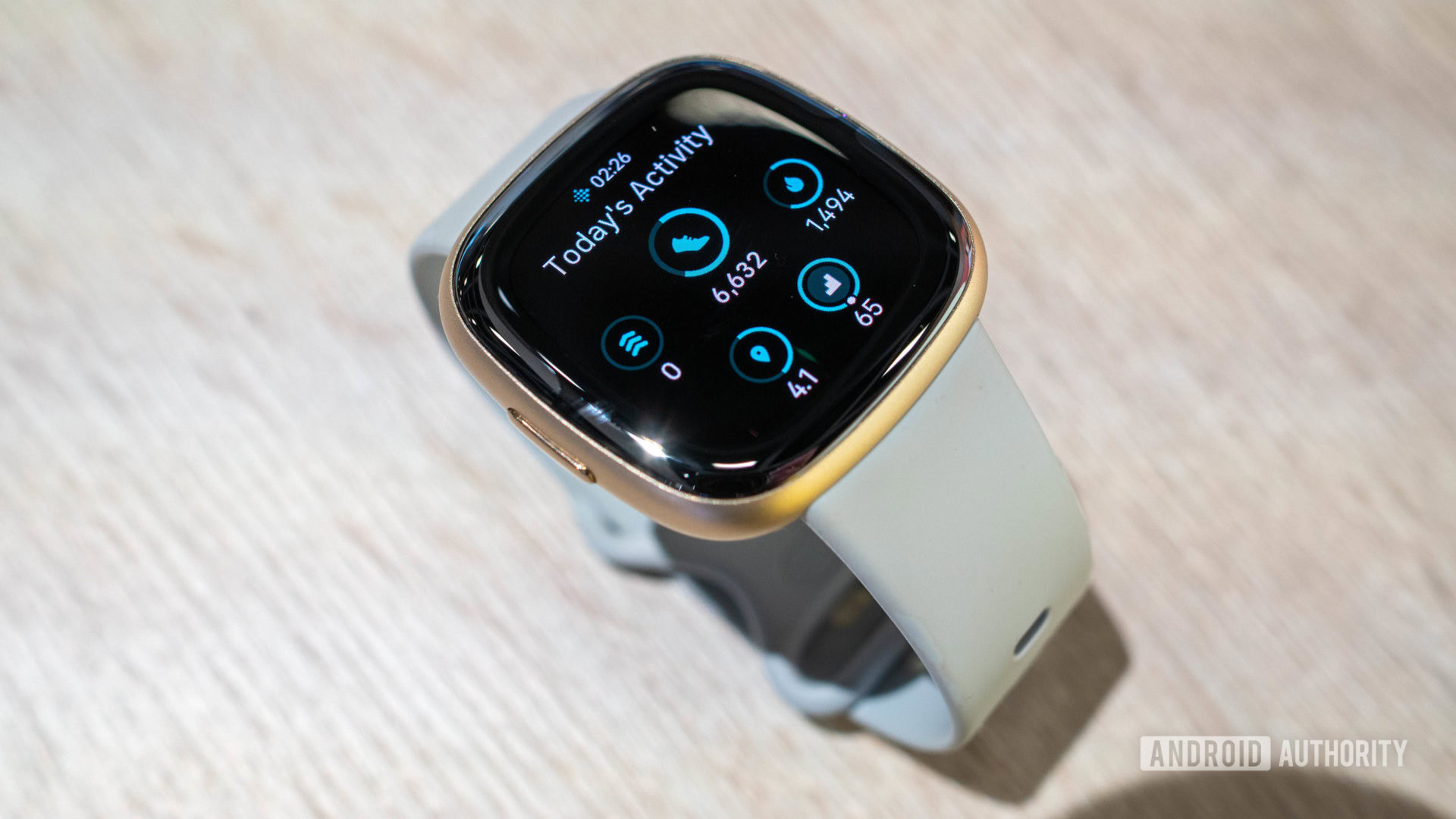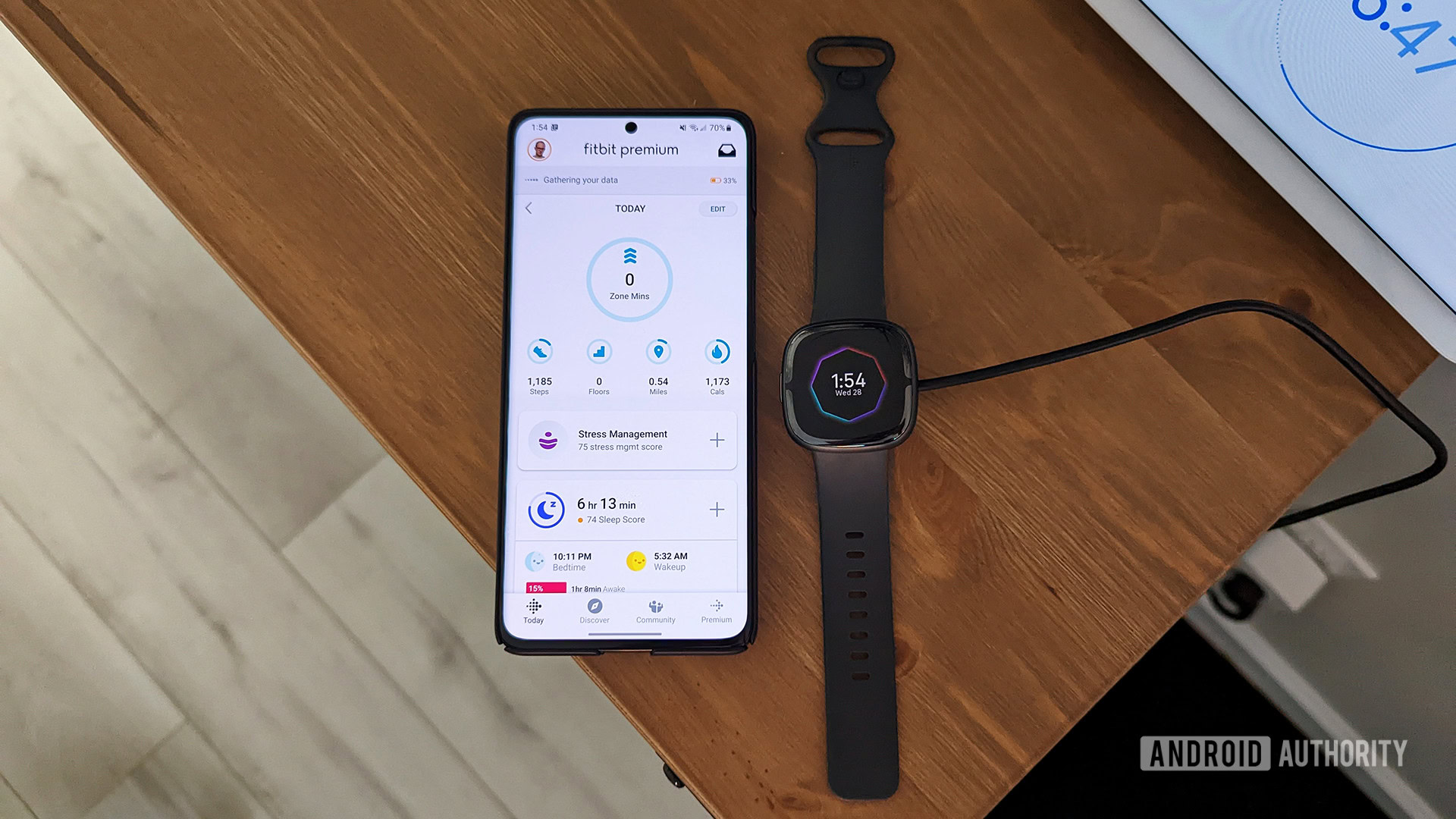Affiliate links on Android Authority may earn us a commission. Learn more.
Fitbit interview: We talk managing stress with the new Body Response feature
Published onMay 17, 2023
We recently conducted a Fitbit interview with Elena Perez, a product manager at the company. We mainly focused on the Body Response feature of the Fitbit Sense 2, the company’s latest flagship smartwatch. This feature measures your body activity and alerts you when it spots high levels of stress. This information could help you manage stress by recognizing triggers and trends.
Elena gives us a bunch of info not just on how the Fitbit product works but also about how stress affects our lives in general. You can read some highlights from the interview below or watch the full video embedded above.
Fitbit interview: Stress, Body Response, and the Fitbit Sense 2

Q: So, what’s going on with stress? Is it slowly killing us all? Why is it such a hot topic at the moment?
It is typically associated with that feeling of worry or what we normally associate with the stress of normal life, like those negative pressures and demands of normal life. What we’re working on and helping people track is that physical response that we have to everyday life demands. And so, what I actually think is happening, is that there’s more awareness [of stress]. People are talking more about stress in the fact that we all experience it. And while there’s still a stigma of it being negative, it can also be positive if you think about preparing for a presentation, for example. You know, that small burst of stress can actually motivate you, or help you meet a deadline. And I think there’s more openness to talk about stress and how it impacts our everyday life. And it’s very personal. What causes me stress or how does my body react? It’s probably different than other people, and might be different for you. The tools that we’re building are designed to help us both, regardless of what our stressors are or how our bodies react to them.
Q: The feature we’re talking about is Body Response. How does it work?
The Sense 2 is powered by an on-device electrodermal activity sensor (EDA) and is continuously tracking. So we actually call it cEDA because it’s on all day and gives you all-day stress management. This type of sensor is typically used more in scientific research. So we’re really excited to have been able to bring it to the Sense 2 and are also thinking about possibilities for the future that we could provide our users.
The Sense 2 uses a cEDA sensor to monitor your stress levels at all times.
But along with cEDA data, we also couple that with heart rate, heart rate variability, and skin temperature data. The whole goal is to identify those acute moments, those changes in your physical response to potential stressors. When we detect these potential acute moments, we prompt you. The goal is not just to notify you that something’s happening but also to allow an opportunity for you to reflect on what’s going on. Is that event positive? Is it negative? That also gives you an opportunity to take action. We intentionally designed it so that it’s a few minutes later when we think you’re most likely able to take a step back, reflect, and actually take action.
You can take action either on the wrist by doing a breathing session. Or you can go back to the mobile app on your own time. Whatever’s more convenient for you. But the whole idea is that we want to help you gain greater awareness of your mind and body connection and what those stressors might be. The goal is to help you understand and gain awareness so that, over time, you can potentially be more prepared so that those stressors don’t impact you as much as they did before.

Q: Is there a universal thing people can do to manage their stress? Or is it very personal?
I wish there were, but it really is so personal. As I mentioned, for me, I really identified the trends within my body. I noticed that I was getting these notifications when I was working late at night, and I wasn’t aware that that was impacting my health. So it really is very personal. The stressors that you may encounter, how your body reacts, and how you build resilience, are really going to empower you to manage those stressors. We can’t provide that magic bullet for everyone, but we really tried to provide options for people to understand what might be best for them.
So, if you’re one of those people that really likes and enjoys a breathing exercise and having that mindful moment, we have breathing exercises. But if you’re someone like me, I actually like to get out and be active, and that’s what works best for me. For people like me, we have anything from yoga to mindful walking to a variety of other workouts that you could do. And again, the beauty is that you can reflect on the device or in the mobile app and view that moment to see what’s actually working best for you so that you can reduce problems later on.
Q: Body Response is exclusive to the Sense 2 at the moment. Will it come to other, less expensive trackers?
I can’t share much about our roadmap. I can say that we’re always looking to bring innovation to more of our users. In the meantime, for other devices like the Fitbit Charge 5, we do have the spot-check EDA scanner. Although it doesn’t provide continuous tracking like the Sense 2, it does provide an opportunity to reflect while you’re doing a mindfulness session and get that response information about how your body’s doing at that moment. Many of our devices also have the stress management score, which is more of a summary of how your physical stress is throughout the day. We also have a variety of different mindfulness content available within the Fitbit Premium subscription.
You can watch the full Fitbit interview above or on the Authority Media YouTube channel.